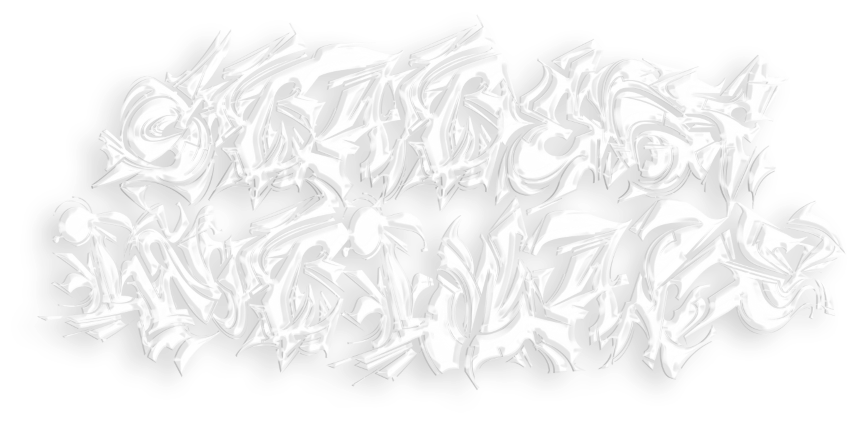exhibition_text
In the field of media art and technology we often discussed, until recently, how to design intimate technology. And the desire to be departing, like Harry Potter, from Platform 9 ¾ seemed to be a major incentive for augmenting and mixing realities. Until last spring, when the University of Art and Design in Linz had to close and a lockdown immersed us all, unwillingly, in a virtual world whilst the physical world seemed to be replaced by daily statistics. This is the context for the Interface Cultures students who worked, for the full 2020 summer semester, in confinement on their projects for this exhibition.
The Interface Cultures students show us their survival tactics: how they dusted off the romantic artistic solitude as a way to fight the feeling of being isolated. The exhibition shows how art can both distract us from loneliness and magnify our social needs in times of confinement. Moreover, the exhibition highlights, maybe even more than before, the relevance of art and artistic research in the digital realm.
Several of the works draw us into the intimacy of the student’s private sphere, as if we are sitting next to them, locked up in their student room in the dorm or wherever on the globe they were stranded when we all went into lockdown. Whilst some of the students invite us in, others are keen to keep us out, and critique the state of our privacy. We are taken behind the scenes and learn that, although we are lucky to have the GDP in place in Europe, we risk privacy erosion when one is asked to ‘donate’ private data. The tech savvy students bring forward questions such as: Sharing one’s intimate data for a good cause or profit? What is the impact of this confinement on our private life, on our democracy? As a sign of the time, the exhibition even includes artistic responses to ‘skin hunger’, a new phenomenon that came along with the new realities’ hygiene and social distancing regulations.
Independently from the isolation, several projects show artistic and ethnographic experiments with social interfaces. These projects lead us down to unknown (fictional) paths in our visual culture where the individual and society intersect. Other paths take us to more distant, but urgently topical, viewpoints of general concern about our online lives and bring forward pressing issues such as: How vulnerable are we online? How do we come to supported resolutions and decisions online? Is our media and biological literacy future-proof?
What all these years’ student projects share is a call to remain alert, a state of emergency. Moreover, this unique exhibition reflects, in many respects, the diversity of the international Interface Cultures students group. Many of the students’ art and technology projects seem to encourage us to consider new collective values.
We hope you’ll be inspired and alerted by their intimate, artistic, socially engaged, technical informed or critical views on our life over the last half year.
Text: Dr. Anne Nigten (Guest Professor)
Management: Fabricio Lamoncha Martinez
Production/Design team: Giacomo Piazzi, Sofia Braga, Antonio Zingaro, Mario Romera, Juan Pablo Linares Ceballos, Matthias Pitscher, Kevan Croton
projects
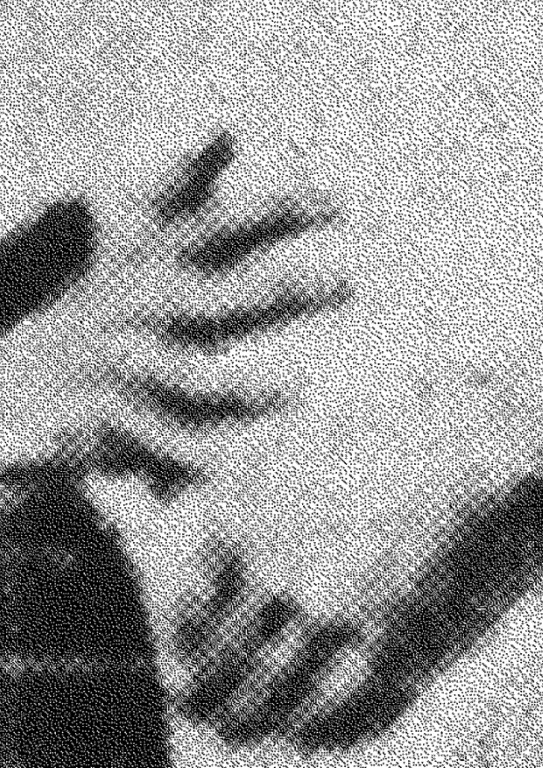
Juan Pablo Linares Ceballos (CO)
Format_Keywords: Installation, Screen, Video
Project_Keywords: Screen, Image, Memory, Digital Space
All at once is a project focusing on the space between images, the way memory rewrites itself constantly from the visual stimulus that we are exposed to through our screens and how it gives shape to the world we inhabit. The project presents a reflective visual digital space made from images constructed using 3D software, programming and visual editing tools. It is an installation of multiple screens displaying short videos from captures of my screen while I work on constructing the images I desire. The videos are played in random order on each screen, so that different visual compositions are possible while people visit the space: there is always something not being seen as we turn our eyes to the other side. I wonder about the process in which each image that has been seen becomes an action towards the world. The installation proposes a space of compressed time between those simultaneous steps as our vision travels around them.
Colombian plastic and visual artist from the National University in Bogotá. We make images from what we can’t forget, what we have felt. Everything we see looks back into us to those images, continuously colliding with them and changing their surface, changing our images of the world. I’m interested in the ways we remember, on widening this experience to the point of overflow/saturation, where maybe images break and let other ones be made from what's left.
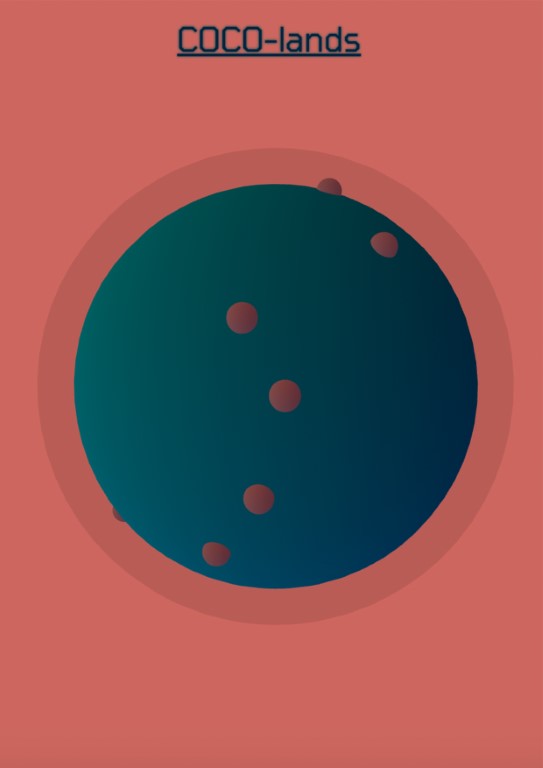
Various artists
Format_Keywords: Installation, Online Platform
Project_Keywords: Online, Video, Photography, Sound, Performance
COCO-lands is a growing digital archive of international media artists dealing with the global COVID-19 crisis. Starting from March 15th, the participants shared their personal reflections on the various forms of isolation from a variety of geographical contexts: from almost complete isolation in Italy, over the strict measures in Austria, to the serious social consequences in the USA and a permanent isolation on a remote island in the middle of the Atlantic ocean. The contributing artists decided to create their digital diaries as a ritual without knowing when the process might end—first and foremost in order to inspire each other against the quarantine of their passions and against the virus as a social epidemic. Thereby they tried to understand and overcome the personal and social anxiety and the repression that are slowly becoming a central element of the current globalized lifestyle.
COCO-lands was initiated by a group of art students from the master program Interface Cultures at The
University of Art and Design Linz (AT). Biographies from each artist can be found on the website of
COCO-lands: https://cocolands.xyz/
A selection of all diary entries can also be viewed on Instagram: @_coco_lands
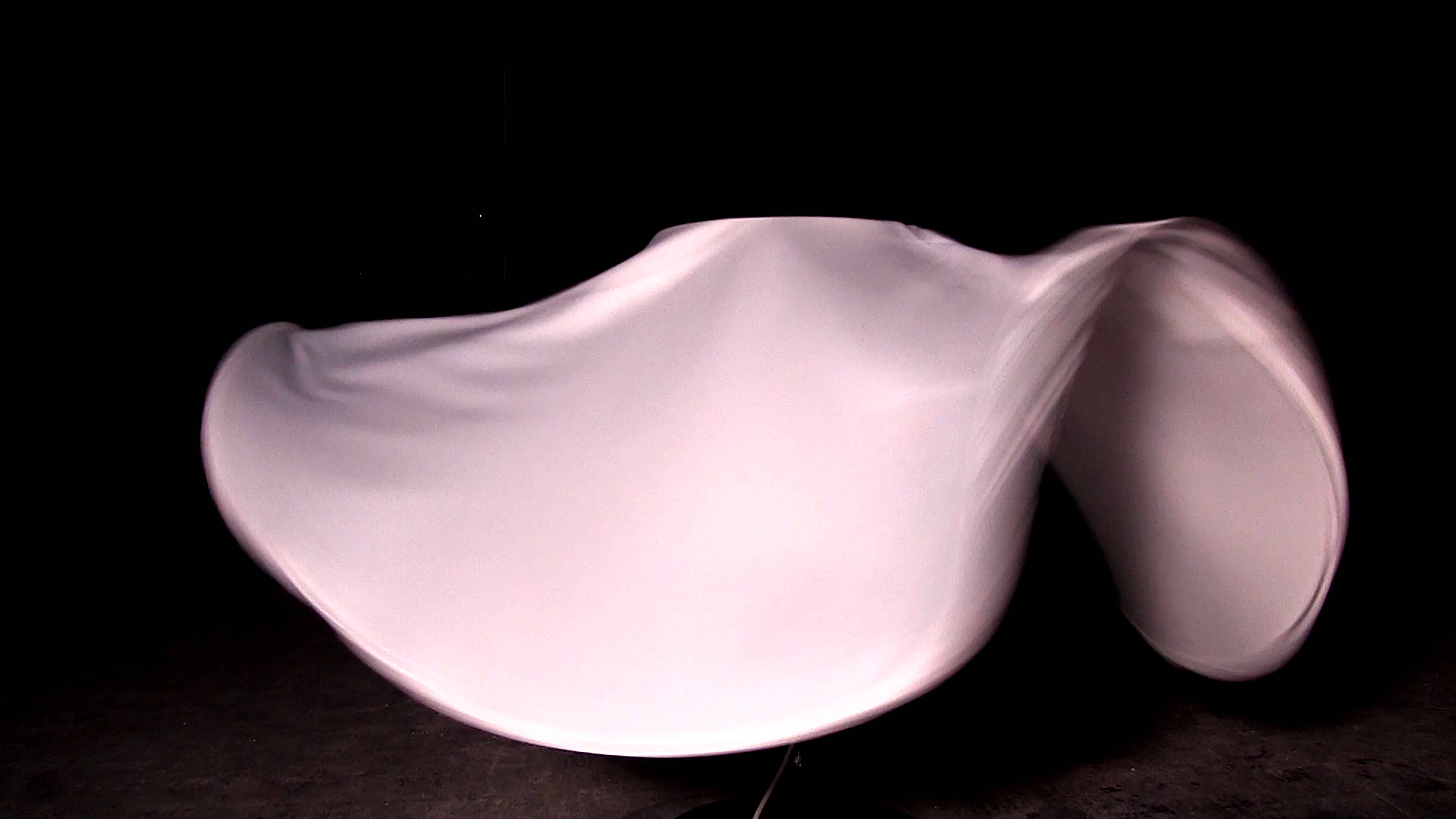
Amir Youseff (FR)
Format_Keywords: Installation, Kinetic Sculpture
Project_Keywords: Fabric, Motors, Poetic Kinetics
Floating Spaces is a three-dimensional kinetic sculpture that unites the forms of a "Tanoura whirlpool Dancer" and a spinning top. It produces a poetic kinetic atmosphere by engaging with the surrounding spaces through the reflection of surrounding monuments. The work is inspired by a distinctive feature of contemporary large cities, which is the disappearance of local, neighborly relations, and the consequent loneliness, alienation, and atomization of the residents. Thus, Floating Spaces reveals the hidden design of public spaces and the values of social inclusion and integration.
Amir Youssef is a visual artist based in Alexandria, Egypt. Between March and September 2020 was a guest student within the exchange program between Interface Cultures department and the École supérieure d’art d’Aix-en-Provence, France. As an artist his practice is concerned with media archaeology and robotics. He works with a variety of media, including video, installation and sculpture, always exploring aspects of movement and kineticism. Since childhood he had great pleasure in inventing moving objects, transforming the form and functionality of toys. He sees many parts of his current practice as an extension of this curiosity for understanding how things work and altering their function and meaning.

Jaskaran Anand (AT/IN)
Technical Direction: Stefan Fuchs (AT)
Format_Keywords: Online/Offline Performance
Project_Keywords: True.Self, False.Self, Body.Self, Digital.Self
In-between Privacy emphasizes on the interconnectedness of society and addresses the visibly rising importance of the “Body.Self” interactions. The project aims at developing a new language for understanding privacy (physical & digital) of the individual and moreover discusses the private/public space definitions within a society made of diverse cultures. In-between Privacy is grounded on the idea that there is no separation of “me”, but rather a collective “I”. It manifests through an interdisciplinary series of performances, discussions and digital prototype(s) focusing on the geo-political nature of the “Body.Self” to enhance social interactions at various levels with the audience and with the artist. It adheres to the concept of “True.Self” & “False.Self", where the “True.Self” can also be hypothesized as the copy of the digital content, as Avatar, that is unknown to an individual. Inbetweenprivacy.lilimit.com Collaborators*: Kunst Vermittlung Museen der Stadt Linz (NORDICO), Plankton Electronics Movement, Spätschicht, RENU, Kilian Jörg, NANNA, Monica Vlad, Yazdan Zand
Born in India, based in Austria since 2015, Jaskaran has been engaged as a performance-maker, performer/dancer & pedagogue for over a decade. His research and interdisciplinary works, centered on the human body, are invested in deconstructing the concept of “Self.Self”: fascination by the nature of spirituality, the psychological understanding of the self and socio-political society. He has graduated from the field(s) of Informatics, Stage Dance/Performance and Dance Pedagogy. www.jaskarananand.com
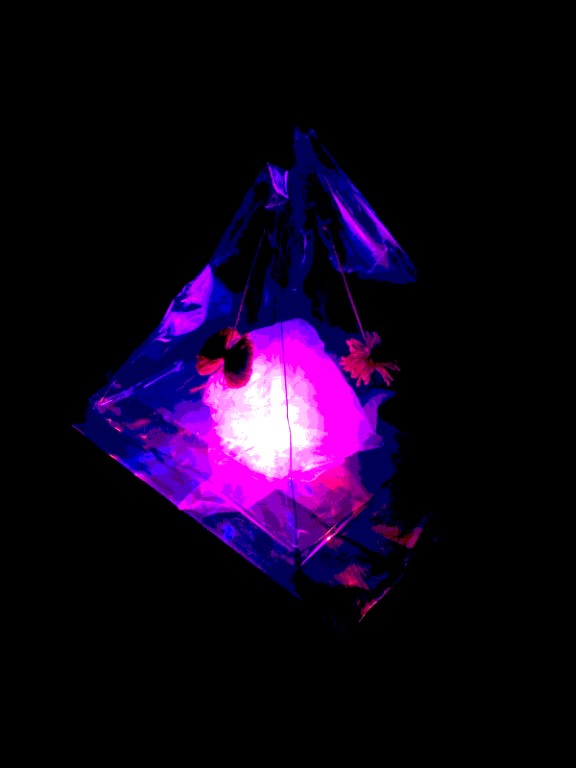
Afra Sönmez (TR) & Nursinem Aslan (TR)
Format_Keywords: Installation, Performance
Project_Keywords: Soundscape, Cities
A textile organism as an electronic instrument.
The meaning of the word ‘onism’ comes from the frustration caused by the awareness of being bound to one
body that can inevitably experience only one place at a time. “ONISMA” offers a way to overcome this new
feeling by offering the audience the possibility to escape the place in which they feel stuck, to reach
a different one. A sound journey is activated through an electronic organism fed by urban sounds, which
offers the audience an alternative way to walk through various cities. Church bells, birds, subway
announcements, etc. become the foundation of a new experience of the urban landscape, allowing us to
overcome our bodily limitations.
Afra Sönmez is an electronic textile designer/researcher who integrates technology with craft, fashion,
and traditional methods. Her works contain different types of e-textile examples such as
kinetic/e-textile costumes, wearable games, and instruments/controllers.
www.afrasonmez.com
Nursinem Aslan is a multidisciplinary artist who combines the subject of nature with technology. After
studying this in various areas and techniques, her interest in new media art and interactive systems
increased. She experiments with sound design, autonomous systems, generative art, and video mapping.
nursinemaslan.xyz
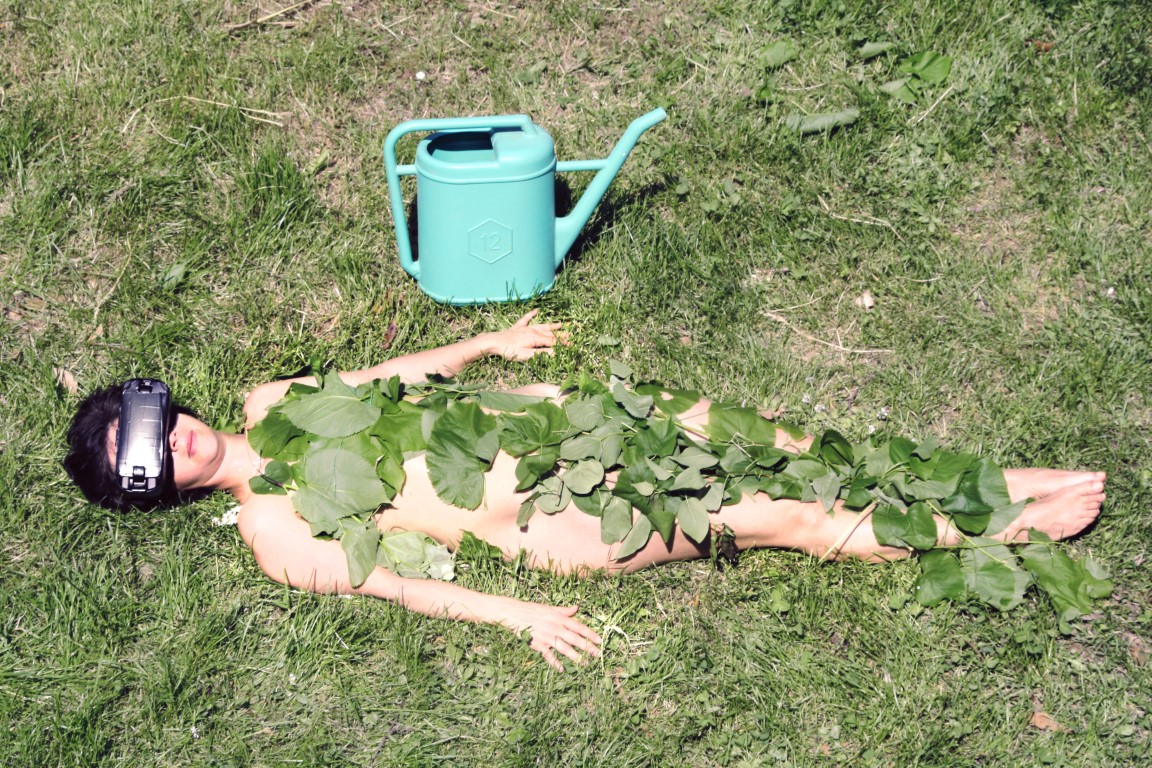
Vanessa V (Concept and design), Andrea Macchia (Images), Vincenzo Guarnieri (Scientific design)
Format_Keywords: Installation, Documentary
Project_Keywords: Bio-Art, Genetic Art, Visual Arts, VR, Immersiveness
Photosynthetic me emerges from a process-based experiment, in which I am the test subject, around the
idea of becoming plant-like. This is based on scientific studies of the photosynthetic qualities of the
Elysia chlorotica slug. The aim is my evolution, whereby I try to activate a photosynthetic system that
can make me self-sufficient for food and energy requirements. The artwork explores the limits among
science, fiction, art and life, displaying video and text documentation. It’s also an installation that
actively involves the visitor. Photosynthetic me is part of a personal path started a few years ago when
I tested positive for the risk of two genetic mutations: breast cancer (BRCA1) and thrombosis (MTHFR).
So, I decided to inquire into the debate around innovative techniques in Genetics. What if we could
replace the diseased parts of our DNA? What if we can swap genes with other species becoming like
leaves? Is this natural? Can I evolve in my imperfection? Is it possible to be perfect?
CREDITS
Production: Alessia Gervasone
Thanks to: Mara Brancaccio and her laboratory for the scientific support and Andrea Ballo for the images
during the Covid-19 quarantine.
Vanessa Vozzo (IT) is a media artist, teacher and researcher interested in the areas of transition
between real and virtual, science and fiction, art and life. She has been working in the field of
interactive/cross-media documentary for many years and she is involved in the art and science field. She
is also a professor in interactive art and immersive cinema at Politecnico di Torino (IT) and Albertina
Art Academy of Turin (IT) and in interactive and VR documentary at Civica Scuola di Cinema “Luchino
Visconti” in Milan (IT). She leads Project Work at the University of Turin (IT) since 2007. She founded
the collaborative new media art platform Officine Sintetiche and she’s attending the Interface Cultures
Master Program in Linz (AT).
vanessav.net
officinesintetiche.it/en/
Andrea Macchia (IT) is a professional freelance photographer. He graduated with a degree in psychology
and is passionate about coding and webmastery. He works mostly in the fields of performing arts and
portraits. For more than 20 years he has been working on the idea of narratives through stage
photography, following the artists during their productions and collaborating with many international
festivals. His work has been exhibited in festivals and art galleries around the world.
Vincenzo Guarnieri (IT), ph.D. in Biochemistry and Molecular Biotechnology. He works in science
communication through an interdisciplinary approach. Founder of the collective Frame – Divagazioni
Scientifiche of Turin (Italy). Member of IRIS (Interdisciplinary Research Institute on Sustainability),
University of Turin, Brescia and Valle d’Aosta. He interacts with artists in order to explore new ways
to actively and critically engage people with science and technology.
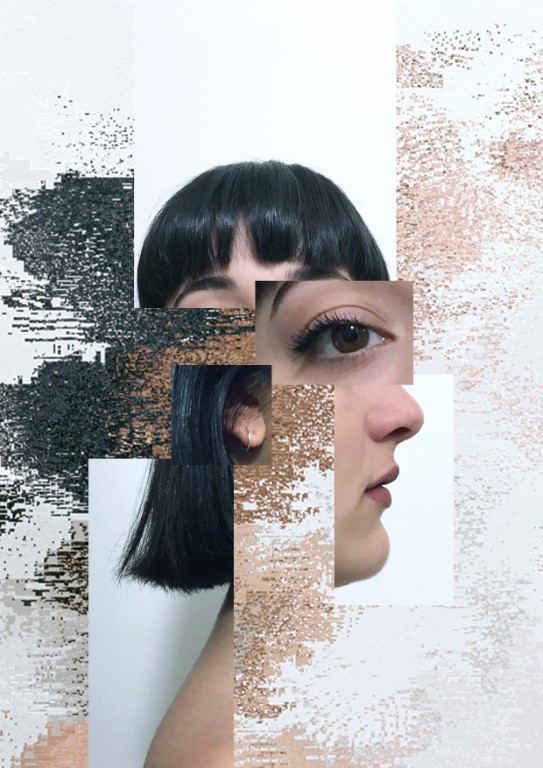
Indiara Di Benedetto (IT)
Format_Keywords: Interactive installation, Performance
Project_Keywords: Memory, Interpretation, Face Memory, Portrait, Mnemonic Device
How does a person interpret and remember a human face? How can these memories and related emotions be communicated? As an attempt to remember individual faces while dealing with large amounts of pictures, Portrait of a Generative Memory focuses on the subjective interpretation of personal memories by collecting information about the elements that people are able to memorize about a human face. The project is centered on the relationship between observation and imagination: observation, as the method used to internalize reality through our intellect, emotions and experience; imagination, as a personal and individual interpretation of a given experience and influenced by the thinking patterns of the individual. Independent from any precise logical elaboration, it processes the content of a sensory experience. The elements of the human face that a person can remember are combined and interpreted to generate a new series of abstract and unrepeatable portraits.
Born in Napoli, based in Linz. Indiara has a main background in video art and photography. In her artistic practice she explores unconventional projection surfaces, the connection between material and immaterial, planned obsolescence and the ways human relationships happen in the context of technology. Currently she explores mnemonic processes in the interaction between the artwork and its audience. Vimeo: https://vimeo.com/indiaradb
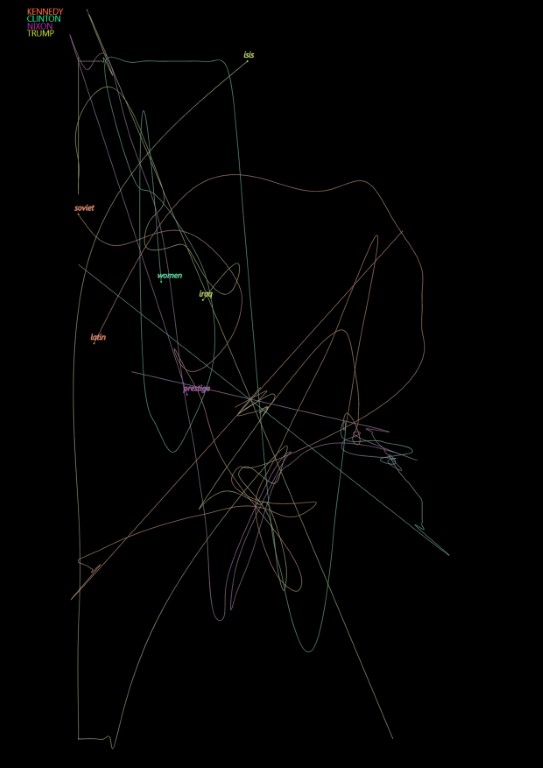
Mario Romera (ES)
Format_Keywords: Installation, Local Area Network, Distributed, Application
Project_Keywords: Decision-making, Collaborative, Machine Learning, Social, Politics
POC (Proof of Consensus) is a web application meant to facilitate decision making processes within groups. It offers the space and time to rethink how consensus mechanisms work. Within this art project, participants will find a combination of technologies such as Peer to Peer (P2P) protocols, Natural Language Processing (NLP) and distributed computing algorithms (Scuttlebutt, pseudo-PAXOS) joint with data visualization techniques (Text vectorization), design thinking (reverse engineering companies strategies) and methodologies from social movements. Proof of consensus is a “stalker” into the world of politics, technology, art and society. Following the echoes of social movements, it digs into machine strategies and techniques, researching new ecosystems in which humans can learn to understand each other and form consensus.
Mario Romera’s research focuses on the exploration of new ways of developing participatory art
experiences. With a background in visual arts, his works are based on individual or collective practices
from everyday situations, mixing life with art as much as possible. His projects aim to improve life
through art, by stimulating a conscious critique of the ‘normality’ we live in. This happens by linking
living concepts with the social values of community, economics and politics and exploring new ways to
build possible alternatives for them.
Currently studying in the Interface Cultures Master program, he researches new ways of interfering in
art and life by customizing already existing interfaces and creating new ones.
marioromera.xyz
marioromera@servus.at
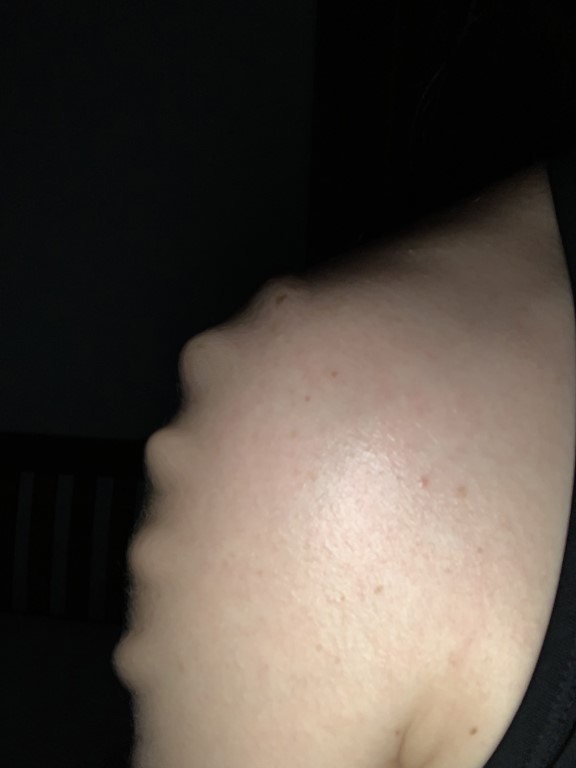
S()fia Braga (IT)
Format_Keywords: Multimedia Installation
Project_Keywords: Routers, Offline Network, Video, Appropriation, Online Culture, Street Tags
There is a disfigured area in the exhibition space. Can you see it? Reach it.
Take your smartphone out of your pocket, oh, it’s already in your hand.
By connecting to the routers you can watch the videos I Stalk Myself more than I Should and Welcome to
My Channel.
Next to the routers you will find a smartphone showing a video, Die Verwandlung, a psychological horror
movie made for Instagram stories format and meant to die in 24h.
The series of videos investigates appropriation, improper use of private content published on the
internet and online nihilism.
Description of each project in the exhibition space (Signage):
Die Verwandlung (2020)
Die Verwandlung (2020) | Project commissioned by TBD Ultramagazine during Corona outbreak | Online
exhibition
Braga's artistic research uses digital devices to investigate the relationship between the real and the
virtual. Always interested in the addictive effect caused by the flow of technological data, with the
project Die Verwandlung the artist conceives an irregular and syncopated narration that can be used on
the Instagram page and on the TBD Ultramagazine website. The project is structurally conceived as a film
but is measured by the time limit of Instagram stories. The subjective videos speak of an increasingly
occlusive and disturbing domestic repetitiveness, which lets the disturbance nestled within the walls of
the house emerge. A series of interventions inserted in post-production amplify the feeling of
disturbance already suggested by shots of body metamorphosis. Additionally, as normally happens in
Instagram's stories, the narration is interrupted by advertisements that advertise consumer objects and
distract the viewer by making the work fragmented. The structure of the video is both linear and
ambiguous: the work remains open at the end, offering the user the possibility to choose between several
options and, consequently, to modify the conclusion. Obsessive repetitiveness, sense of anguish and
alienation of domestic space are reduced to a dimension of playfulness, at the same time real and
surreal. The project refers to the playful dimension of interactive video in which the role of the user
becomes fundamental in the creation of the work itself.
Welcome to my Channel (2020) Welcome To My Channel (2020) | project exhibited within the exhibition
"Recalculating. Computing territories and their analog actuators" curated by Davide Bevilacqua | Gorizia
(IT)
Sofia Braga’s work is based on the appropriation of video vlogs downloaded from some of the most
widespread online platforms, in which young people confess intimate and confidential aspects of their
existence online, including experiences linked to their diagnosed mental disorders.
The editing of these materials follows the typical format of this kind of digital product: an
introduction, a presentation of the topic of the video and, at the end, an invitation to follow the
channel. Within this virtual context, mental health is just another tool to be employed within the
dynamics of self-narrative on social media.
Personal narratives are confused with self-promotion and the promotion of potential sponsors, thus
becoming very difficult to trace the boundaries between reality and fiction.
I Stalk Myself more than I Should (2019)
I Stalk Myself more than I Should (2019) project exhibited at Ars Electronica Festival 2019, XII Video
Vortex conference (La Valletta, MT). It will be exhibited at Share Festival 2020 – Riots, Here We Are,
Turin, (IT) and Ibrida Festival 2020, Forlì (IT) (postponed due Corona Outbreak).
There is a narcissistic aspect in surveillance which empowers internet users to monitor their behaviours
daily, overcoming the fear of being observed. The sharing of structured, rationalized and complex
intimate contents positions users in a digital (p)anopticon. This content is not easily read and is
subject to multiple interpretation, hence it’s possible to find various starting points for speculative
stories. I Stalk Myself More Than I Should is an archive of expired memories that were meant to die
within 24 hours. The work displays a selection of Instagram Stories preserved through the use of screen
recordings. Going against the nature of this feature, the project investigates appropriation,
interpretation and representation, as well as qualities and hierarchies of human memories shared and
stored online.
S()fia Braga (Parma, 1991) is an Italian artist and cyberstalker based in Linz. She develops her artistic research at the intersection between Digital, Post-Digital practices and cyberstalking, focusing on the materiality of the web and the social impact of web interfaces. She graduated in Visual Arts (BA, MA) at the Academy of Fine Arts of Bologna and is currently attending the Interface Cultures master program. In 2019 she curated the Internet Yami-Ichi at Ars Electronica Festival and its first Italian edition in Bologna. Her works have been exhibited at Ars Electronica Festival, The Wrong – The New Digital Art Biennale, Pinacoteca Albertina di Torino, Deutsche Bank (Milan), Xie Zilong Photography Museum (China), XII Video Vortex Conference (Malta), Speculum Artium (Slovenia), Link Cabinet (Italy) and more.

S()fia Braga (IT), IDPW
Format_Keywords: Event
Project_Keywords: Online Culture, Post-Internet, Black Market
Shut down your computer and join the third edition of The Internet Yami-Ichi in Linz!
The Internet Yami-Ichi, from the Japanese “Internet Black Market,” but also “sickness” and “addiction,”
is a flea market where people consumed by the Internet can share and buy Internet-related things in real
life.
The Internet Yami-Ichi was created by the Japanese art collective IDPW in 2012, and took place in Tokyo
for the first time. Since then many editions have been organized in various cities like New York, Seoul,
Moscow, Berlin and more.
yami-ichi.biz/
Participants
Sofia Braga (IT) – sofiabraga.com
Fabricio Lamoncha (ES) – fabriciolamoncha.com
Julia del Río (ES) – instagram.com/ihighlyrespectfeminism
Namkor Studio (RU) – namkorstudio.com
Nina Mcnab (DE) – instagram.com/vaq2k19
Istihar Kalach (DE) – instagram.com/istihar_kalach
Cesar Escudero Andaluz (ES) – escuderoandaluz.com
Martin Nadal (ES) – martinnadal.eu
Matthias Pitscher (DE) – pitscher.net
Laura Krok (AT) – paradiesforschung.com
David Quiles Guillò (ES) – davidquilesguillo.com
Isabella Auer (AT) – isabellaauer.com
Letta Shtohryn (MT) – lettashtohryn.xyz
Vanessa Graf (AT) – vanessagraf.at
Studio Tonnato (IT) – instagram.com/studiotonnato • studiotonnato.tumblr.com
Valerio Veneruso (IT) – bananefanzine.it • instagram.com/valeriodadaveneruso
Davide Spillari (IT)
Clusterduck (IT/DE) – bazaar.clusterduck.space • clusterduck.space
Prazlab (AT) (Veronika Krenn, Vesela Mihaylova) – taste-of-data.tumblr.com

Nomi Sasaki (PE/JP)
Format_Keywords: Performance
Project_Keywords: Children, Biometric Data, Privacy, New Technologies, Digital Self-awareness, Micro
Puppet Theater
A hungry Andean cat travels to the coast to fish, unaware that he has some special
followers.
The project recreates a short micro puppet theater for children where the scenography is animated by the
spectator's biometric data. While seeing the show inside a box through a peeping hole, the kid activates
sensors that take the data to move clouds, waves, and more.
Inspired by the Lambe Lambe puppetry, Track-track: Let’s Follow the Cat! aims to explore children’s new
digital environment and the concerns that biometric data and the notion of privacy implies. This
interactive puppet show investigates how children recognize themselves as a data source and how they
perceive their own digital data as a resource.
Nomi Sasaki is a Peruvian Japanese visual artist devoted to Chinese black ink tradition and animation.
Her work explores scale and dimension, the material nature of water, the behavior of light, and how
these elements can create new landscapes and atmospheres for multidisciplinary performances. Her recent
work focuses on micro-realities and peep media. She is currently doing her master’s degree in Interface
Cultures at Kunstuniversität Linz.
nomisasaki.com

Bálint Budai (HU)
Format_Keywords: VR Installation
Project_Keywords: Virtual Reality, Psychedelic-documentation, Entities, Frozen Visions
“What’s next” is a VR installation based on visual imaginaries related to existing concepts of afterlife. The artwork collects all these visions into one: a multitude of entities levitate in a generative space together. Through Virtual Reality participants can see how a “non-real” life form looks like.
New media artist based in Linz, Austria. He was born in Budapest, Hungary. His background is in music and dance studies, graphic design and printmaking. He worked as a painter and performed as a dancer and percussion musician. At the same time, he created installations and poems. Currently he focuses on audio and visual interactivity in a post-conceptual art framework.
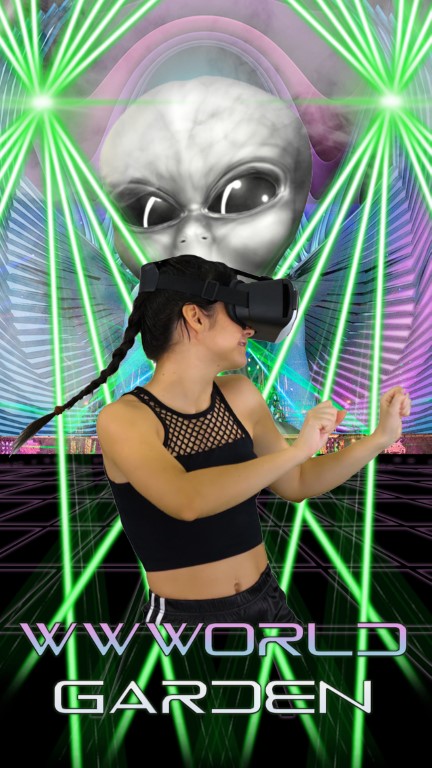
Thu Trang Eva Ha (AT/VN)
Format_Keywords: Installation, Performance
Project_Keywords: VR, EDM
WWWORLDGARDEN is a social virtual reality experience. The online space is built on concepts of Electronic Dance Music Festivals. Playful lasers, smoke machines, powerful projections, flashy visuals promote feelings of “ecstasy”. In a state of emergency such as the current one, it is not possible to organize cultural events safely and the date when we might return to concerts, clubs, or festivals is unknown. Cultural gatherings are the last on the list of social events to return. Despite DJs using social media platforms to make live stream events happen, the experience of listening to techno music at home cannot be compared in any level to how music is experienced at physical raves, where an intimate communication between the DJ and the participants is established. DJs interact with their crowd through music, and the crowd interacts back with dance, creating a nonverbal feedback loop in which both parties operate as one unit. Thu Trang Eva Ha—aka Shinsekai—establishes WWWORLDGARDEN, an online stage to celebrate the virtual festival experience.
Thu Trang Eva Ha (*1993 in AT, lives and works on Earth) graduated with a background in Digital Media Art. Her main area of speciality combines the dynamic fields of Digital Media Art (Art, Science, Technology) with Electronic Dance Music Cultures, creating an interdisciplinary way of (re)thinking underground and mainstream dance club cultures. As a researcher and active participant in Electronic Dance Music (EDM), her approach as a DJ is to express her current interests as an ecstatic journey, and to reflect on the contemporary world and its global issues. She uses the dancefloor as an interface to create awareness for social change. Besides working towards her MA in Interface Cultures at University of Arts and Design in Linz, she is an active member of PYUK.edp, an international DJ collective based in Linz/Vienna.

Agora Digitalis is the Interface Cultures’ network meeting point during Campus exhibition 2020. The general idea behind Agora Digitalis is to create an informal setting where students, (future) makers and future students meet and all get acquainted with Interface Cultures. Agora Digitalis is a physical and virtual place where everyone should be able to express and share their ideas. It is planned to be a place for informal learning and critical debate about developments in the arts, technology and science.
This year’s State of Intimacy edition will undoubtedly reflect on our recent online experiences and might also, in its slipstream, revisit recent techno-utopian ideals. To kick-start the Agora Digitalis debate I’ll highlight some issues that came to the surface in recent conversations and reflections with students and artists. For the sake of the argument I’ll summarise these in some bold statements:
- Recently the city and the world came to a stand-still and we moved our learning and work lives to online environments, this confronted us with the internet’s sensorial shortcomings
- The dominance of commercial software platforms forced us to face that our daily online experiences are situated on a neo-capitalist transactional playground.
- For IC art students and artists in the field of art & technology, a good internet connection and technical literacy are more important than ever.
- The pandemic brutally pointed us to our problematic relationship with our biosphere; what we eat and breath.
Please note that I am not putting forward these issues as doom scenarios. On the contrary, I look at these issues as references to the, also frequently heard, hopeful voices from engaged scientists, artists and authors that label the pandemic as a game changer, a turning point for change. (Carrington, Giordano, 2020) We are now in the position to rethink and maybe even reshape our reality. To do so, we need creative forces that immerse us in intimate multisensorial experiences and take us to alternative realities. Although this might sound like high-flown idealism, we’ll need imagination and radical creativity to shape our mixed reality. Or as Pierre Levy once wrote: … imagination, and especially collective imagination, produces reality (Lévy, 2005). In this context, it is probably unnecessary to state that our recent experiences taught us that our reality is a mixed reality. But as was mentioned earlier, today’s mixed reality has considerable shortcomings. Interface Cultures finds itself at the spot, where art, technology and science intersect. Initiatives such as the Science Technology and ARTS (STARTS) Prize, hosted by Ars Electronica and others, show us that this nexus is a splendid point of departure to catalyse creativity, to shape (parts of) our near future. (Nigten, 2020) Therefore, it is important to discuss with students, artists and their science and technology allies how they perceive their role and the relevance of art in these times of change.
Dr. Anne Nigten
Guest professor Interface Cultures
Curator Agora Digitalis
References:
Damian Carrington, Coronavirus: 'Nature is sending us a message’, says UN environment chief, 2020
https://www.theguardian.com/world/2020/mar/25/coronavirus-nature-is-sending-us-a-message-says-un-environment-chief
Paolo Giordano, How Contagion Works, 2020
Pierre Lévy, Collective Intelligence, A Civilisation: Towards a Method of Positive Interpretation,
Article in International Journal of Politics Culture and Society, 2005
Anne Nigten, STARTS Prize, Evaluation 2017-2019: a theory of change, 2020
